The best part about setting up your own business is getting your ideas out there, creating a name for yourself, and making your own money- without working for ‘the man’.
Unfortunately, though, there are times when if you don’t plan things properly, certain areas of your business can haemorrhage money. And you may not even be aware of the problem until it’s too late. Even if you don’t come across any major problems, though, it’s always good to save money where you can.
After all, you never know what is around the corner. Having something saved up for a rainy day might just get you out of an unexpected pickle. Knowing where and how to save costs in business may keep a firm going through uncertain times.
What’s more, there may be areas filled with cost-saving measures that you may not even realise. Implementing cost-cutting ideas in the right places can stop you from needlessly losing money. For example,Vistage tells us that British businesses lose £2.7 billion a year due to bad communication with employees.
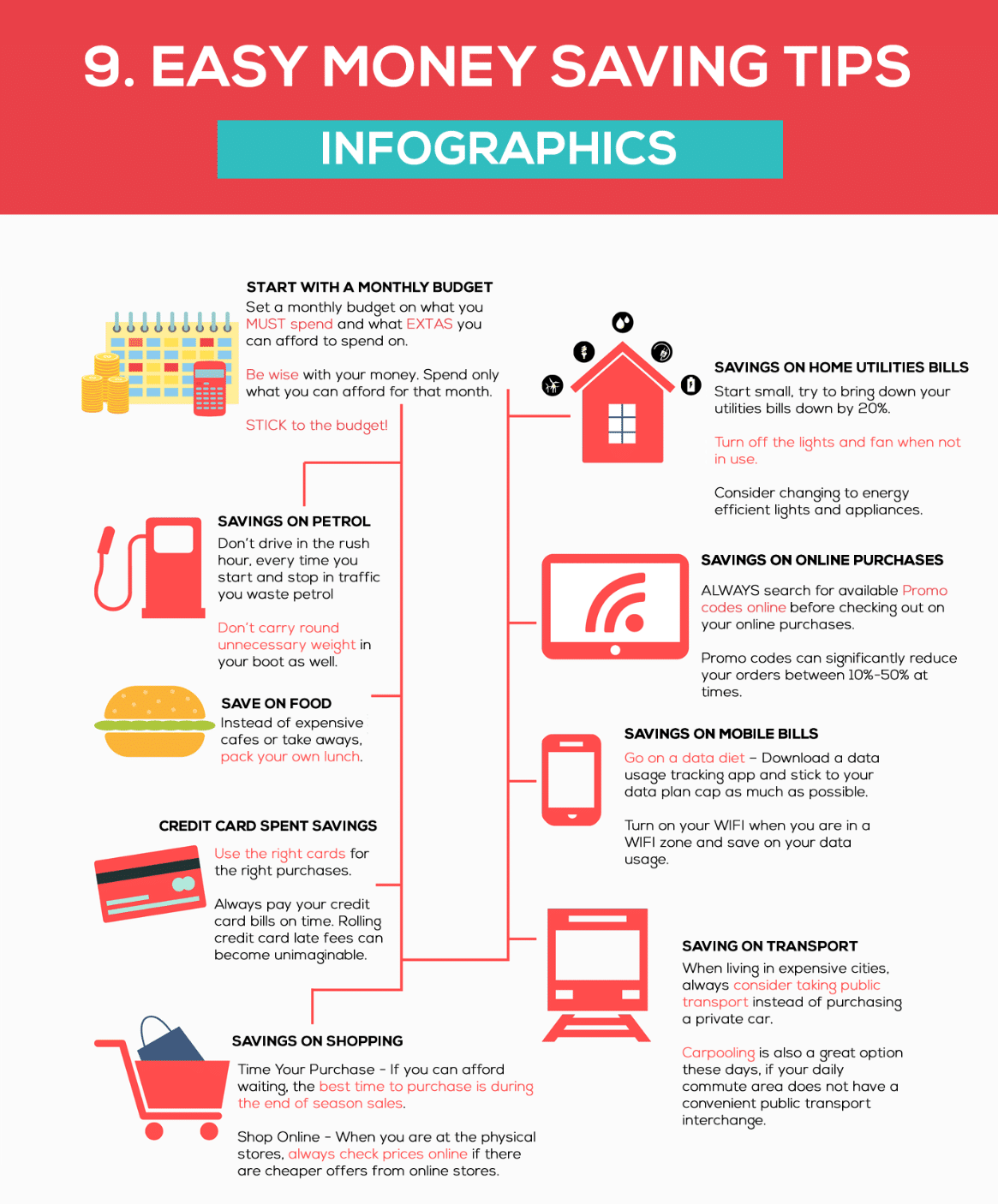
Source: Infographic Journal
One of the best things you can do for your business is to be sensible and come up with some cost-saving ideas. Take some time out, either by yourself or as a team, and take a deep look into the areas of your business that will benefit from realistic money-saving plans.
Coming up with some cost-saving ideas might just save you in the future. Or maybe it will simply give you a bit of extra cash to hire more staff or make other improvements. Whatever your reason for it, there are so many places in businesses to save money, they just need a little bit of effort to make them work.
Importance of Cost Savings

Cost-saving isn’t just about becoming a Scrooge and lining your pockets with as much gold as possible. It’s about doing what is best for your company, your staff, and your customers.
Saving money in the right places means that you can pump that finance back into different areas. It may be that it means you can finally invest in the technology that will bring you into the 21st Century. It could also mean that you can get more staff and take the pressure off your current team, preventing high turnover rates. Or finding places to cut costs can mean that you simply have a back-up in case anything goes wrong.
You may even be able to save enough dough to build an empire and have streets lined with your shop.
But no matter if you are a start-up or a fully established enterprise, investing in cost-saving ideas will help you have a positive impact on the world. How? Because wasting less money means that profit can be funnelled back into the economy. And that means fewer financial issues on a global scale.
A surprise bonus to cost savings is that you may even have a positive impact on the environment, too. Depending on where you are making cutbacks, it could mean that less ends up in landfills or even fewer things being made in the first place.
Now, let’s have a further look at where these savings lie and how you can become more cost-effective across the board.
Types of Business Costs and How to Save Them
You may be surprised at the number of different places you can cut costs in the business. These examples of savings will show you the areas you may be experiencing high business costs, that you can cut to save money now and in the future. You can add them to your business plan and even think of some more cost-saving ideas that will help your business specifically.
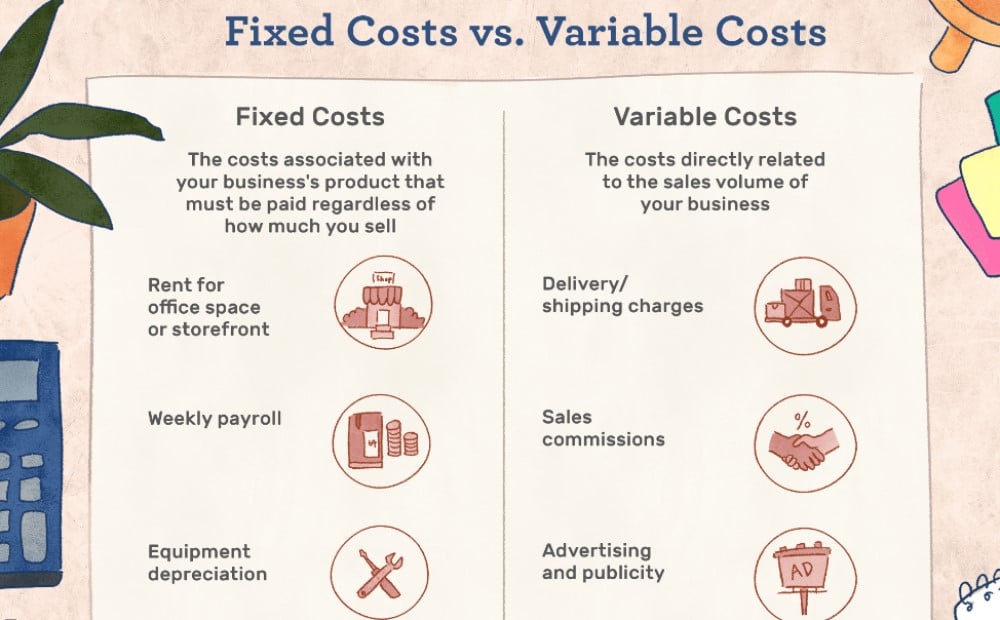
Source: The Balance
1. Save on energy.
Do you remember when you were young and your parents would always say, “switch that light off, I’m not made of money!” Well, they had a point. Energy costs companies much more money than they may be aware of.
Think about it, all those computers, the heating, the air conditioning, and all those lights are bound to take up a lot of energy. And the more staff you have, the more energy that is being wasted, and the more it costs. You only need to look at your latest electricity bill to see that.
Forbes tells us that a quarter of emissions are created through the energy that is lost or wasted. Energy costs money and so wasted energy mean wasted money.
Therefore, you need to figure out the places that are taking up the most energy and cut down on this. This isn’t to say you should tell the staff to cancel the video calls and bring a hot water bottle into the office. But if you are still using 60-watt lightbulbs from the 90s, perhaps it’s time to shop around and switch to energy-efficient ones. Or make sure computers aren’t being left on overnight.
This means that you should really pay attention to your energy bill. Look at the areas where energy is being excessively used and talk to your energy supplier about places that energy can be reduced.
Energy saving is also an ideology that you should push on your staff. Especially if they work in an office space. One way to deal with this is to set up a ‘wasted energy jar’. It works a bit like a swear jar and every time you catch someone wasting energy, they have to pop some change into the jar. They will soon learn to press ‘off’ rather than standby.
You can use the money you have saved to reward your staff with a box of doughnuts or something similar each week.
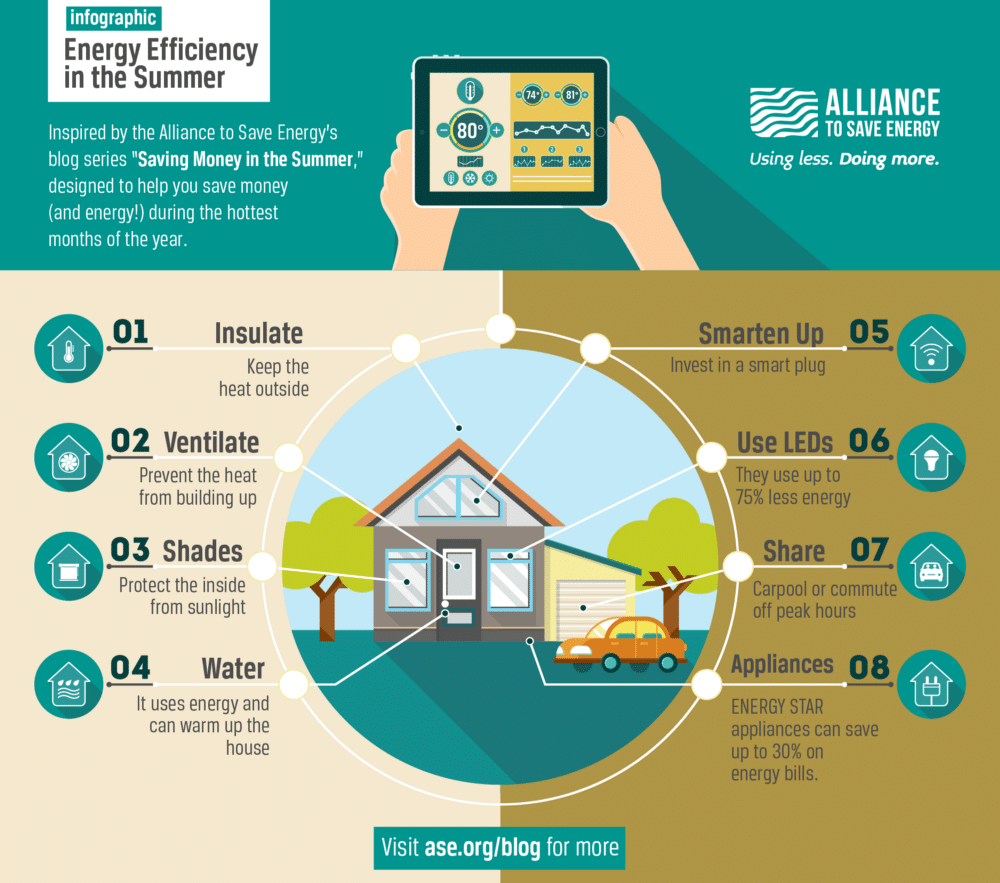
Source: Ase
Other Energy Saving Ideas
There are plenty of ways in which you can save energy and save money. Whether people are working remotely or from the office, here are just a few more energy and cost-saving measures that are easy to implement:
Label Switches – This way everyone from the CEO to the interns know the ones they should switch off. As well as the ones they shouldn’t.
Charge Things Overnight – A lot of energy plans have types of costing that charge different prices for usage dependent on the time of day. Therefore, it makes sense to charge big units overnight to save money.
Don’t Over Light Things – Yes, we must see what we are doing. But as things like computers give off a glow anyway, people don’t need the light of a thousand suns to get work done better. Plus, too much unnatural lighting can cause headaches, nausea, and eyestrain for people. And paying out for those sick days won’t save money at all.
Use Natural Lighting – If you have invested in getting an office with huge windows and a skylight, take advantage of this. Even if you haven’t, it’s great to use natural light where you can. Natural light cancels out any artificial light anyway.
Install Sensor Lighting – Whether this is in bathrooms or the warehouse, it means energy isn’t being wasted on a space without anyone in it.
Replace Desktops with Laptops – When the time comes to replace the computer, upgrade it for a laptop instead. They use much less energy, and many can do just as much as most computers.
Cost-saving tips for the home, like those in the below image, can also apply to many workplaces:

Source: Miss Many Pennies
2. Cut down on waste.
Anything that ends up in the bin is wasted money.
Think of it like this, in the UK, £19 billion worth of food is thrown away every year, according to Wrap. At some point in the lifetime of that food, it was planted, gathered, put together, and packaged to be sold and eaten.
That’s £19 billion sitting in a landfill that has turned from profit to waste.
Even if your business has nothing to do with food or hospitality, the point is that you are most likely throwing a good chunk of your profit in the bin. Anything you purchased was bought to be used or sold. So, when it’s not being used, it’s being wasted. Therefore, using things as much as you can means you are saving money and cutting costs in unexpected places.
Here are some examples of savings you can make through cutting down on waste:
Use Both Sides of the Paper – When using the printer or copier, use both sides of the paper to cut costs on the amount of paper and office supplies you are buying. Even if you are printing out information for clients, most people really won’t mind that writing is on both sides of the paper. And you are saving the trees as well as the hole in your pocket.
Swap to Reusable – If you have something like a drinks machine in the office, instead of using a plastic cup after plastic cup, encourage staff to bring in a water bottle or glass.
Streamline your Packaging – Companies that work in production can also cut down on costs by using packaging that is more suitable for the size of the product. Rather than using reems of polystyrene to bulk out space.
Learn to Go Paperless – Way too often we print out work that could be seen just as easily on-screen. The more we work from home, the more we will get used to just sending things online. Rather than printing things out that just end up in the bin.
Take Away Personal Bins – We’ve all seen that one empty crisp packet under someone’s desk be bagged up and thrown away. A whole bin bag used for that one item. To prevent things like that from happening, use one durable bin or recycle bin for the whole office. This saves money on constantly buying cleaning products and having to pay the cleaner over time, too.
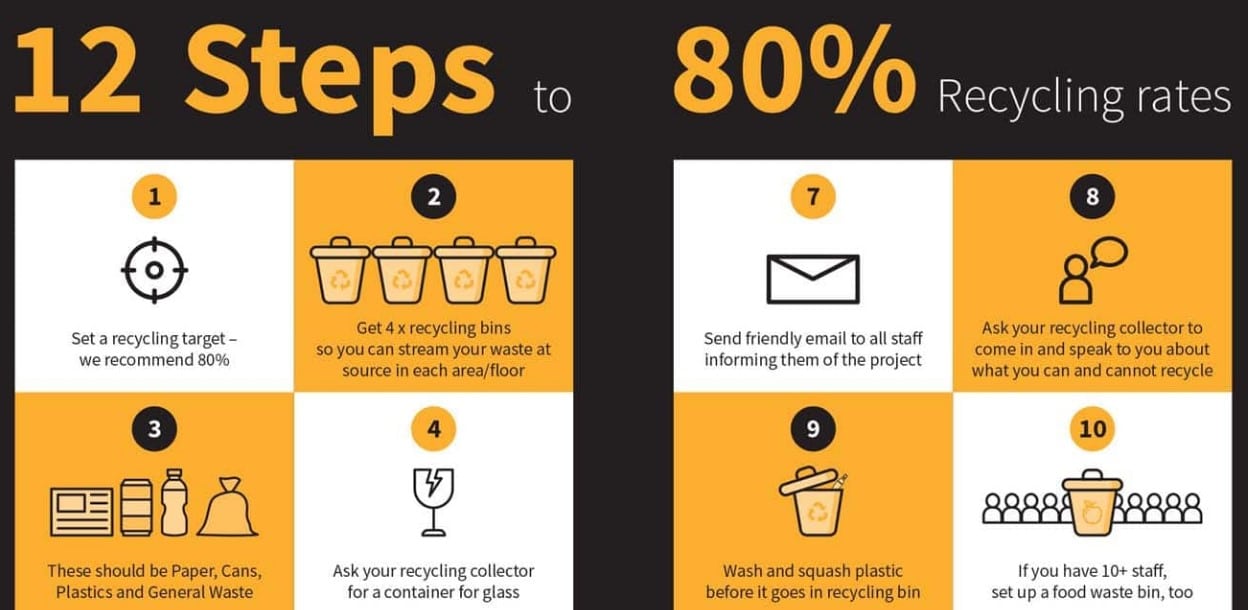
Source: Brightwaste Recycling
3. Consider how you use water.
Implementing cost-saving measures is about thinking about how we can save money constantly. As we all use water throughout the day, every day, it’s a really good place to use some money saving techniques. According to Shower Stream, enough water to fill 1,262 Olympic sized swimming pools is wasted in the UK every day!
Here are some suggestions to make sure your money isn’t being flushed away through water wastage:
Use Low-Flow – If you offer showers at work, make sure they’re upgraded to have low-flow water flow. The same goes for taps. After all, there’s nothing worse than having a high-powered tap that sprays us with water every time we use it. Remember, low water flow can mean a higher cash flow.
Insert A Water Hippo – Making sure the toilet has a water hippo greatly reduces water consumption. Most places don’t rely on Victorian plumbing anymore, and we don’t need to use tonnes of water for the toilet. A water hippo is an excellent low-cost way to save money in the long run.
Install Motion Sensors – They were once thought to be a thing of the future, but as motion sensors are now part of our everyday lives, there is no excuse not to install them and save money (and water!)
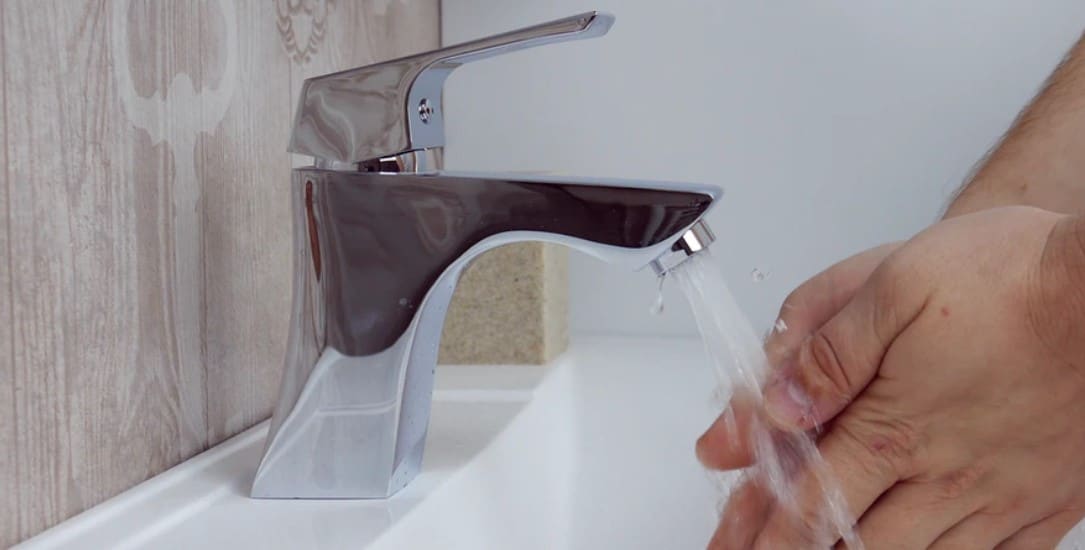
4. Take it home.
One of the best ways to save money is to encourage employees to work from home. Of course, right now, whether they work in customer sales or design, most people are working from home. But the bottom line is, to save money, you might have to make working in-house from inside the actual house, a permanent rather than short-term thing.
This depends on the type of cost you are using, but in general, you don’t have to pay for rent (a massive saving), energy bills, or water bills when your team’s fully remote. As most people end up having conferences through video calls, you also save money on other expenses. Like having to pay for a cup of coffee for a client or travel costs for your employee to meet them.
5. Substitute software.
When you know-how, there are plenty of free software alternatives out there available for businesses. A bit like using vouchers, this type of cost-cutting ends up saving money in the most unexpected places. You just need to find them.
The best way to substitute here is through the software and licensing fees you use. There are many free versions of the software most of us use every day. For example, there is free antivirus, free versions of Word, free word editing software, free film editing software, free photo editing software…the list goes on.
Of course, as to be expected, free software isn’t always as good and can even lag a bit. However, more often than not, it does the job and as technology develops, the free technology available develops, too. If you are using one device, it may be worth investing in paid software. But when using software on multiple devices, the cost soon adds up.
The type of software you use depends on the type of company you are. Consider the software you want to substitute in for free. It could be a CMS, anti-virus (which we should all be using anyway), or a website design platform. Then do a quick Google – other search engines are available – search to find a free version of it and how to implement it into your system.
Another hack is to use YouTube to find explanatory videos that will help you on this journey.

6. Combine usage.
Instead of using a plethora of companies, people, or products to help run your business, try to consolidate them into one component per area.
For example, instead of using a separate company for gas and electric, go through one firm. Or say that you outsource to benefit from the skills of a writer, a designer, and a marketer. Instead of outsourcing to many different firms, use one agency. Or maybe you have a separate phone and internet contract, it’s a good idea to use one company for both.
Combining parts of your business that you usually keep separate will help with cost reduction. This is because enterprises tend to reduce prices when you use them for more than one thing.
A good thing about doing this is that you can even barter for a lower price if you end up using one company for many services. Say if you are looking for insurance to cover your business, your car, and your home, it’s worth giving your insurance company a call, seeing what they can offer, and bartering with them for a better deal.
You can even think about the tech that you use. Luckily for us, we live in a world where tech is starting to naturally combine. We aren’t in an age where we can’t use the phone and the internet at the same time anymore. Consider the technology you use in your office and find out if it will be cheaper to use it on one device, rather than three.
For example, if you are talking to customers on a phone, using a mobile to send colleagues messages, and using a laptop to email people, it may just be more efficient to use a product that combines all three. Saving you money in the long run.
7. Be influenced.
As a small business owner, it’s always good to see what other firms are doing to save money. You can then take inspiration from this.
Newspapers, for example, shrink their pages or put more stories online to save on printing costs. Is this something you can do too? Or it could be that you take inspiration from food industries who have cut down on takeaway packaging or serving sizes. Whatever it is, there is nothing wrong with borrowing a few money-saving ideas and using them in your business.
You may even notice that firms similar to yours have decided to use the same staff for different roles. For example, you could put the copywriter in charge of social media posts, too. Just make sure you aren’t pushing staff too hard and taking advantage of them.
Or maybe another company avoids full-time staff to save money. Meaning you can consider outsourcing or hiring part-time staff to replace full-time workers. E.g., if you only produce one blog a month, it will be cheaper to outsource to an occasional freelancer or independent contractor.
Alternatively, if you need a lot of work doing, and are constantly outsourcing, in which case it may be cheaper to hire an in-house member of staff.
It’s about knowing what your needs are and thinking about the specific changes you need to make.
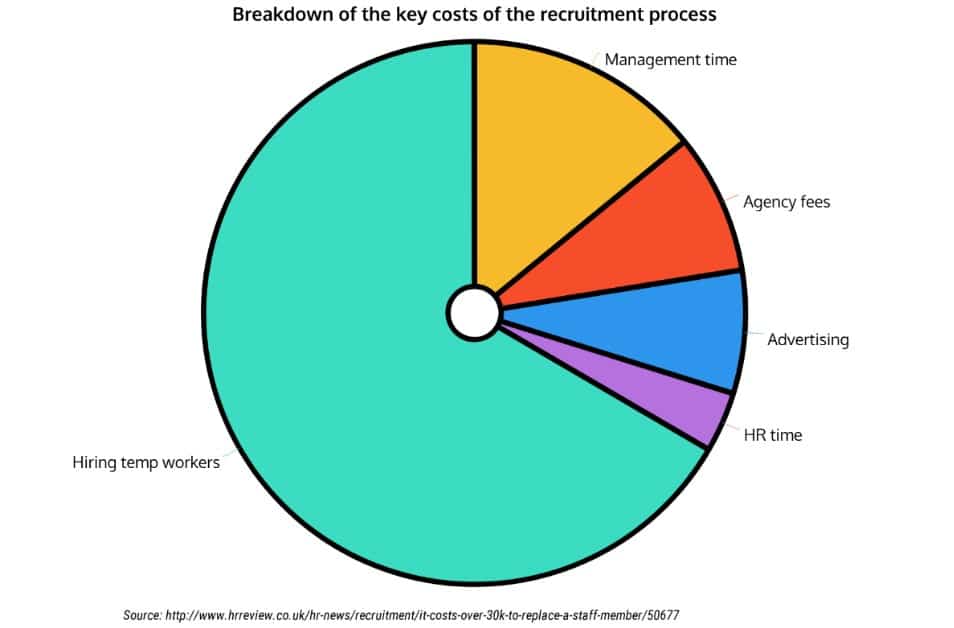
Source: Open Recruitment Limited
8. Change the way you use things.
Using day-to-day business elements differently may give you more cost-saving ideas than you realise. Here are a few miscellaneous ideas of how changing regular practice can save money.
You may decide to push your desks together and sublet the extra space. Or, as we discussed above, get rid of the office altogether and encourage people to work from home if possible.
It may be that when it comes to replacing office furniture or laptops, you buy second hand. Or, if you have part-time staff, they can ‘hot desk’, share seating, or even use coworking spaces instead of the office.
If you run an online business and have inventory that you aren’t managing to sell through your online shop, you may be able to sell it on eBay instead. Often, you may even be able to sell to discount shops who will buy products from you in bulk and sell them off at a cheaper rate.
Have a rummage around your storeroom, too. Maybe you will find an unused lamp, a bunch of novelty pens, or a box of unused ink cartridges. Put them on eBay and use your business skills to sell them and make a bit of extra cash that way, too, or put them to use in the office.
There are many other ways that savings can be made from unexpected places. Having a brainstorm will help you think of some more.
9. Keep on top of expenses.
Any tiny expenditure needs to get recorded. Whether that be Friday pizza, coffee for a client, printer cartridges, or a hotel room on a business trip. That way, you can see how much money is being spent on what and the areas to cut down.
For example, if you are paying people’s travel expenses to get to work, then you can tell people to carpool, and pay for one car instead of five separate journeys.
Doing this will help you to figure out if paying for certain expenses is worth the money. Say you are buying lunch for a client and it comes to £30 but they only buy a £50 product, for example. That expensive lunch wasn’t really worth it. Looking through your expenses lets you know that in the future, it’s better to take clients for a cup of coffee instead.
For a small business, these expenses can make a huge difference.
10. Analyse the production side.
Advertising is big in many firms. Whether that means being a magazine sponsored by adverts or putting out advertisements for your own company. However, today, traditional advertising can be expensive and there are lots of cheaper, just as effective, ways of getting your name out there.
For example, instead of putting a TV advert out, you could write an SEO blog that uses keyword research to gain you more web traffic.
You may even decide to run advertising banners on the side of your website. Which means people pay you to advertise their company on your site. This is a good way of earning a bit more income.
As well as this you could split marketing and advertising with a partner company. You could team up with a company similar to yours and share production costs, mailing lists, social media output, or distribution channels.
Affiliate marketing is another mutually beneficial type of partnership to consider.

Source: Social Media Impact
Conclusion
Any type of savings measures you implement won’t work miracles overnight. All of these ideas are long term processes. Keep in mind, too, that some of the areas may need an initial investment, but again, will be worth it.
Also, try not to rush everything at once, because some things may take a little bit of getting used to. You can even talk to an entrepreneur with experience in the field and see the ideas they came up with.
Making these changes will hopefully encourage you to think of more cost-saving ideas that will help your firm in the future. Implementing some, too, can also have a positive impact on the world and society outside your office.
Originally published Nov 19, 2020, updated Jan 16, 2023



